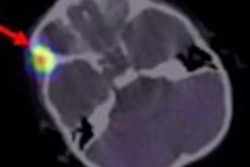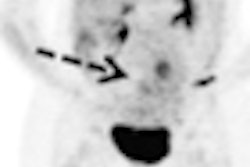With the right protocols and precautions in place, caregivers who take care of pediatric neuroblastoma patients can avoid high levels of radiation exposure from iodine-131 metaiodobenzylguanidine (I-131 MIBG) therapy.
Researchers at Children's Hospital Boston found no significant difference in caregiver radiation exposure relative to patient age or the level of I-131 that was administered, and all caregivers at the hospital received radiation doses less than 5.0 mSv, which is less than current standards for family members of therapy patients.
I-131 MIBG therapy is high-dose, targeted radiation therapy used in treating neuroblastoma, primarily for pediatric patients who are in a relapsed or refractory stage of the disease that is not responding to conventional therapy. Because of the high level of radiation associated with I-131 therapy, patients typically can remain radioactive for a few days following treatment and may expose caregivers and other people to radiation. Patients are therefore kept in isolation for several days to protect family members, healthcare workers, and other patients.
At Children's Hospital, pediatric neuroblastoma patients typically undergo three to five days of isolation and are assisted by caregivers, often the child's parents or close family members, who participate in the care during the child's stay, according to lead study author Dr. Robert Markelewicz. Markelewicz presented a study on the radiation dose to these individuals at the Society of Nuclear Medicine (SNM) annual meeting in June.
Caregiver instructions
Caregivers at Children's Hospital receive specific radiation safety training and certain restrictions prior to participation. The guidelines include allowing only one caregiver in the isolation room at a time to provide care, such as emptying urine and possibly administering medications under the instruction and guidance of the nursing staff. The isolation room includes an electronic audio system for communication and a leaded glass window for observation.
The child's room also has a lead-lined box at bedside for radioactive waste, such as tissues and diapers, and the room is secured for contamination control. Caregivers use a portable, shielded syringe pump to deliver the treatment dose from the hospital's lab. The dose itself remains shielded throughout the infusion process.
Markelewicz and colleagues enrolled 14 children who were treated for relapsed neuroblastoma at the hospital from February 2009 through October 2010. The patients ranged in age from 3 years to 13, with an average age of 7 years.
The researchers used a weight-based regimen for treatment dose, from 0.44 to 0.66 GBq/kg. For example, a 35-kg (77-lb) child would receive 15 to 23 GBq (600 MCi).
"It is important to remember that the administered activity is directly proportional to weight and also is thought to be directly proportional to age, given the pediatric population," Markelewicz said during the presentation.
Because there is limited radiation exposure data on caregivers and few, if any, guidelines as to what caregivers are expected to receive during treatments, the researchers sought prior approval and were granted permission by the state of Massachusetts for the caregivers to receive up to 20 mSv. That limit was based on anecdotal experience at other pediatric institutions.
In addition, total whole-body caregiver radiation dose was monitored using electronic, real-time, and thermoluminescent dosimeters.
The researchers also separated the pediatric patients into two groups: one group consisted of children younger than 7 years old, while the other group had children older than 7 years.
The analysis of patient and caregiver radiation exposure for all 14 patients showed a wide range of administered I-131 dose, ranging from 5.9 to 23.3 GBq. The mean administered dose was 8.77 ± 2.07 GBq (range, 5.92-11.1 GBq) for the group of children younger than 7, while the mean administered dose for the group older than 7 was 17.32 ± 3.4 GBq (range, 11.84-23.31 GBq).
Radiation exposure
For the caregivers, radiation exposure ranged from 0.35 to 3.81 mSv, and there was no correlation between whole-body radiation dose to caregivers and the therapeutic dose of I-131 administered to patients (r = -0.068).
The researchers also analyzed dose to caregivers based on patient age. The mean exposure for caregivers with children younger than 7 years was 1.94 ± 1.17 mSv (range, 0.7-3.81 mSv), compared with 1.69 ± 0.99 mSv (range, 0.35-3.37 mSv) for caregivers with children older than 7. However, the findings did not reach statistical significance (p = 0.673).
"We suggest that it is possible that children 7 [years of age] and older require less direct caregiver support during hospital isolation," Markelewicz explained. "However, ultimately, the most important point is that all caregivers receive radiation doses allowed under current regulations for individuals exposed to therapy patients during their hospital isolation, which is less than 5 mSv."
As a follow-up to this study, Markelewicz and colleagues plan to further explore the amount of time that a caregiver stays in an isolation room to see how that duration may affect radiation exposure safety.



















